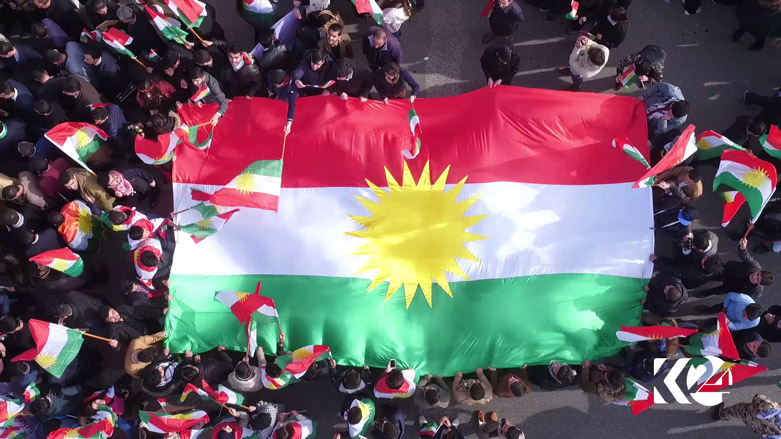Kurds in Minnesota, North Dakota rally for Kurdistan referendum
WASHINGTON DC, United States (Kurdistan 24) – Kurdish communities around the US are holding rallies in support of the Sep. 25 independence referendum—like this community living in the northern plains along the North Dakota-Minnesota state line.
The Kurdish population of Iraq is not the largest in the Middle East—Turkey’s is much bigger and Iran’s is somewhat bigger—but the overwhelming majority of Kurds in the US came from Iraq.
Since the 1970s, waves of Iraqi Kurds settled in the country, each wave fleeing a new horror back home.
The first group came after 1975, when the Shah of Iran and Saddam Hussein reached an accord, which gave half the riverine border between Iraq and Iran to Iran and in which each ruler agreed to stop supporting the other’s opponents.
Thus, Saddam ended his support for Iranian Baluch (a Sunni people, living in the east of the country) and the Shah ended his support for Iraqi Kurds, causing some 200,000 to flee and producing the first significant Kurdish immigration to America.
The community, living in Moorhead, Minnesota, and Fargo, North Dakota, mostly arrived after the 1991 Gulf War.
President George H.W. Bush had ended that war, leaving Saddam Hussein in power, and Saddam then ruthlessly repressed the Kurdish revolt that had erupted at war’s end (as well as the Shiite revolt.) Fearing that he would again use chemical weapons against them, nearly the entire population of the Kurdistan Region fled to the mountains.
Most soon returned under “Operation Provide Comfort,” the US-led military operation that helped bring the Kurdish population back home.
But some people ended up in America, and they are the core of this community, of which Nick Farok is a leading member.
Farok helped organize the referendum festival and addressed the crowd. “On Sep. 25, there is no holding back,” Farrok proclaimed. “We have this one chance in a lifetime, and that chance is to be a state.”
“A state that we can all be proud of, democratic through and through.”
Farok thanked the Peshmerga, “who are fighting on behalf of the world.”
“They are defending freedom everywhere, with minimal weaponry,” he affirmed. “But when you have a heart, you don’t need a whole lot of weapons.”
Del Rae Williams, the mayor of Moorhead, also spoke. “You are my community,” she said. And on September 25, “I will be glued to the internet” to follow news of the referendum. “And I will celebrate, knowing that you are celebrating too.”
Dr. Robert Brenneman is a professor at North Central University in Minneapolis and author of a book on the Kurds, "As Strong as the Mountains: A Kurdish Cultural Journey."
Brenneman lived in Kurdistan in the 1990s. He described to Kurdistan24 the tremendous developments that have taken place in the Kurdistan Region between then and now.
In 1991, when Brenneman first arrived in Kurdistan, the people were “the victims of Anfal, of Saddam Hussein’s treacherous killing and slaughter, of the destruction of 4,000 villages.”
But the Kurds have “rebuilt the country,” he said. “It’s hard to believe the transformation.”
“This is a very special day,” Brenneman affirmed. “And we all need to get behind this referendum.”
Editing by G.H. Renaud

